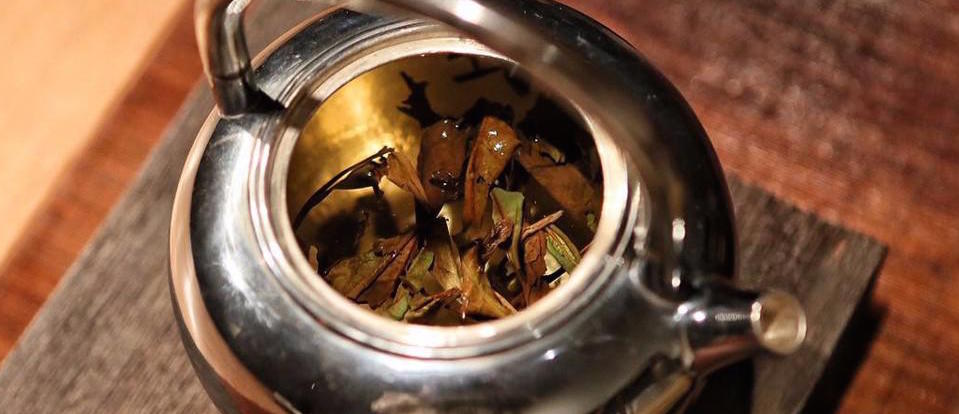
When asked for the origin of the name 'Shou Mei' white tea, some villagers in Fuding shared with us an interesting legend with lots of truths packed in a romantised story.
The Legend of The Lazy Xiao Brothers
Once upon a time there were two brothers who lived in Nankeng. Even though they inherited a tea garden, they were careless. The leaves they picked weren't consistent in size, as they randomly picked buds as well as larger leaves.
Note: consisting in size and composition of the leaves (e.g. one bud & 2 leaves) is an important quality factor in tea.
When it comes to processing, they couldn't even be bothered with simple green tea processing, let alone making oxidized oolong or black teas. It was just too much labor, and their excuse was that they could save on coal for roasting leaves.
The Accidental Discovery of Shou Mei / Gong Mei
The consequence was that they didn't apply any processing steps such as roasting and rolling. To make the tea ready for sale, the irregular leaves where just dried under the sun and then cooled down in the shadow. By accident they found out that by applying less processing steps they didn't destroy the layer of white hairs on the leaves. As the tea turned out to be very popular, it earned different names including:
- 'bai hao cha' (白毫茶) - white hair tea;
- 'nankeng bai' (南坑白) - white tea from Nankeng; and
- 'xiao bai' (小白) - small white.
Villagers were so impressed with the appearance that they tried to find out the secret behind the Xiao brother's teas. When they hid near their farm to spy on their processing techniques, they couldn't discover anything. The only thing they saw was that they're drying the leaves; not realizing that drying was actually the only thing the brothers did.
Entering the Palace
During the Qin dynasty some officials loved the white tea for the soft mellow flavor and thick soup. Because the shape resembled an eyebrow, they decided to name it:
- 'shou mei' (寿眉) - longevity eyebrow
Why longevity? The reason for adding 'longevity' isn't clear. One farmer told us that it's because of Shou Mei's great anti-aging properties. Another farmer told us that it's due to the long-term storage capability of compressed white tea cakes.
An official in Fujian, later on decided to select this tea as a tribute to the emperor. That's why he changed the name from shou mei to:
- 'gong mei' (贡眉) - tribute eyebrow
After entering the palace, it was loved for it's intense aroma, soft and thick flavor as well as the appearance of the irregular leaves and colors in the cup.
Besides, by adding 'tribute' to the name, the official was able to sell it in the tea market for a better price; an marketing technique that was often applied in ancient China. After all, who doesn't want something that is treasured inside the palace?
Shou Mei / Gong Mei in Today's Grading System
Today, shou mei en gong mei are two names mainly used as a grading name for white tea. Silver Needle (or 'Bai Hao Yin Zhen') is the highest grade followed by Bai Mu Dan, Gong Mei and Shou Mei. Do note that this grading system is mainly used for grading the delicacy of the leaves. Silver Needle is the highest grade due to the fact that it contains the most buds. However, processing and aging is at least as important when it comes to white tea, which is why Shou Mei and Gong Mei can still be excellent teas.
Because of the amazing capability of Shou Mei white tea to acquire taste over time, they're also compressed into Shou Mei white tea cakes.
We hope you enjoyed the story!